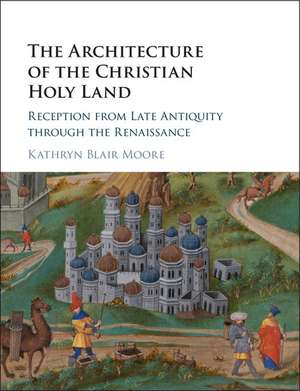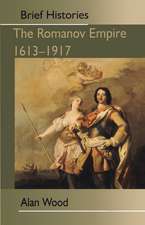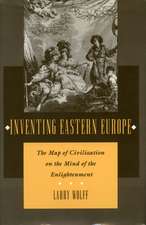The Architecture of the Christian Holy Land: Reception from Late Antiquity through the Renaissance
Autor Kathryn Blair Mooreen Limba Engleză Hardback – 26 feb 2017
Preț: 795.74 lei
Preț vechi: 925.28 lei
-14% Nou
Puncte Express: 1194
Preț estimativ în valută:
152.28€ • 158.08$ • 126.98£
152.28€ • 158.08$ • 126.98£
Carte tipărită la comandă
Livrare economică 22 martie-05 aprilie
Preluare comenzi: 021 569.72.76
Specificații
ISBN-13: 9781107139084
ISBN-10: 1107139082
Pagini: 436
Ilustrații: 223 b/w illus. 22 colour illus.
Dimensiuni: 223 x 287 x 30 mm
Greutate: 1.73 kg
Editura: Cambridge University Press
Colecția Cambridge University Press
Locul publicării:New York, United States
ISBN-10: 1107139082
Pagini: 436
Ilustrații: 223 b/w illus. 22 colour illus.
Dimensiuni: 223 x 287 x 30 mm
Greutate: 1.73 kg
Editura: Cambridge University Press
Colecția Cambridge University Press
Locul publicării:New York, United States
Cuprins
Preface; Abbreviations; List of illustrations; Introduction; Part I. The Symbolization of Holy Land Architecture: 1. Fragmentary inscriptions and material presence; 2. Rome and Constantinople; 3. Architectural inscriptions in Adomnán's De Locis Sanctis; 4. Recreations of the Holy Sepulcher and Benedictine monasticism; Part II. Triumphal Restoration and Recreation in the Crusades: 5. The Crusader conquest and triumphal recreation; 6. The restoration of the Temple of Solomon; 7. Recreating the city of Jerusalem; 8. True portraits/true Jerusalems; Part III. The Franciscan Custody of the Holy Land: 9. Formation of the Franciscan Custody; 10. Assisi as a New Jerusalem; 11. Franciscan books on the Holy Land pilgrimage; 12. Signs of Christianity and Islam; Part IV. Imagined Pilgrimages and Crusades in the Renaissance: 13. The ephemeral architecture of Philip the Good's crusading ambitions; 14. The conspicuous nobility of dedication to Holy Land architecture; 15. The Franciscan Order, papacy, and symbolic possession of the Holy Land; 16. Protestant Reformation, Ottoman conquest, and Catholic renewal after 1517; Epilogue; Bibliography; Notes.
Recenzii
'Most significantly, Moore focuses on the varying perceptions about these architectural landmarks over time and the ways they were visualized in different artistic media. Well written, including ample notes, and illustrated with images. Highly Recommended.' J. Pollini, Choice
'The book provides a first attempt at a general synthesis of a topic that was never discussed from a longue durée perspective. The author politely reacts against the tendency, still underlying many art-historical studies following a famous article by Richard Krautheimer, to consider all buildings that came to be described in medieval and early modern sources as inspired by or stemming directly from the Jerusalem Holy Sepulcher and other loca sancta churches as generic, symbolic, or basically inaccurate replicas of their archetypes.' Michele Bacci, The American Historical Review
'The book provides a first attempt at a general synthesis of a topic that was never discussed from a longue durée perspective. The author politely reacts against the tendency, still underlying many art-historical studies following a famous article by Richard Krautheimer, to consider all buildings that came to be described in medieval and early modern sources as inspired by or stemming directly from the Jerusalem Holy Sepulcher and other loca sancta churches as generic, symbolic, or basically inaccurate replicas of their archetypes.' Michele Bacci, The American Historical Review
Notă biografică
Descriere
Moore traces and re-interprets the significance of the architecture of the Christian Holy Land within changing religious and political contexts.











